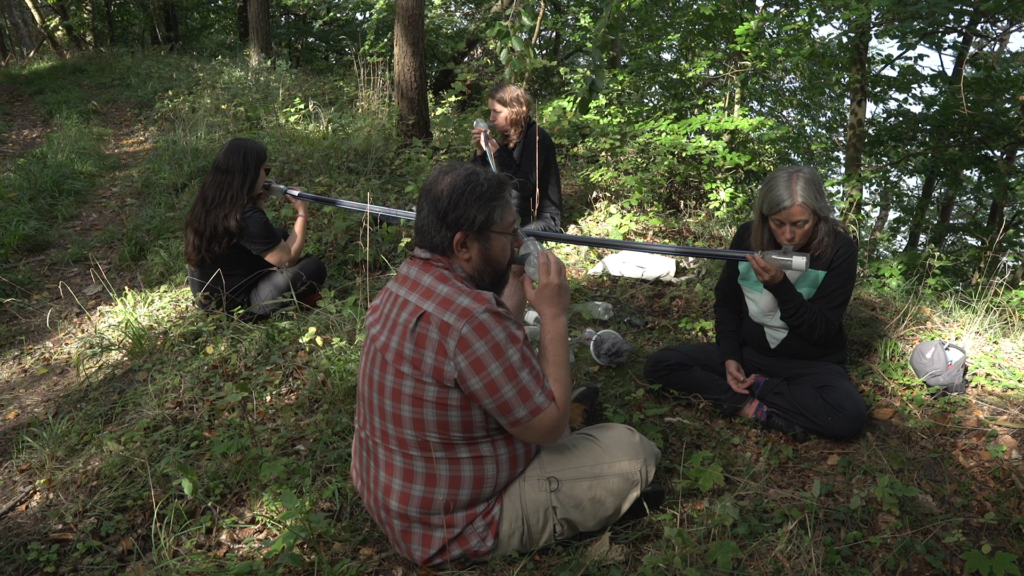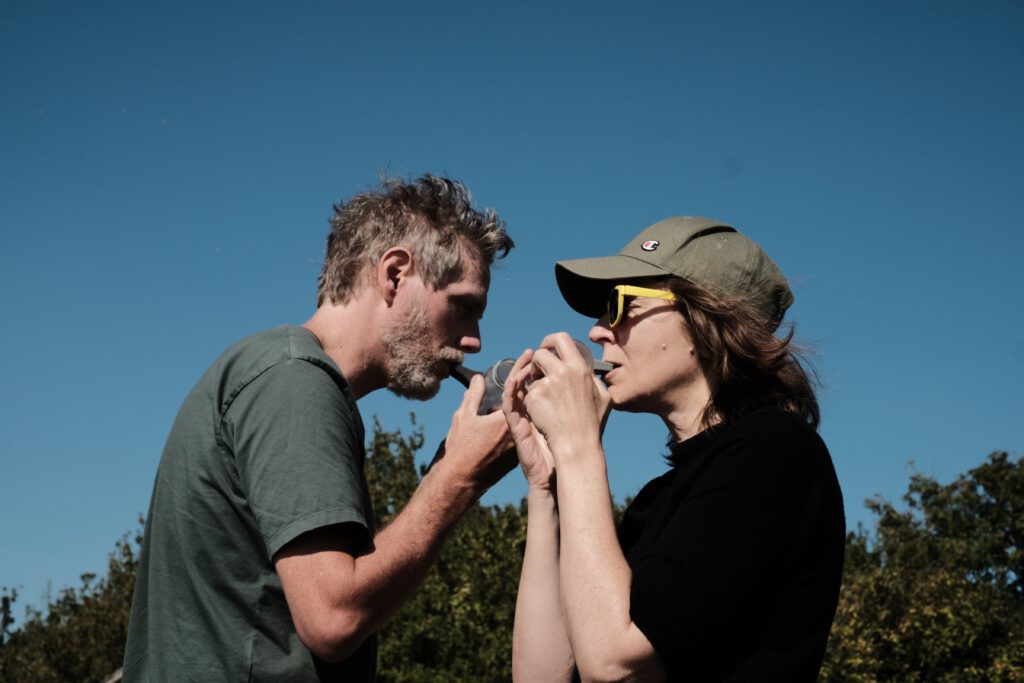By Kerstin Ergenzinger & Florencia Curci
Preparing the walk through the Lapataia valley with maps and through the cartographic gaze from afar we strongly felt our foreignness and the valley’s negative space. Its resonance space was an external void. Its prevailing elements seemed to be water and wind.
We imagined bodies and voices in the winds. We imagined to join with our breath sounding tones without semantics.
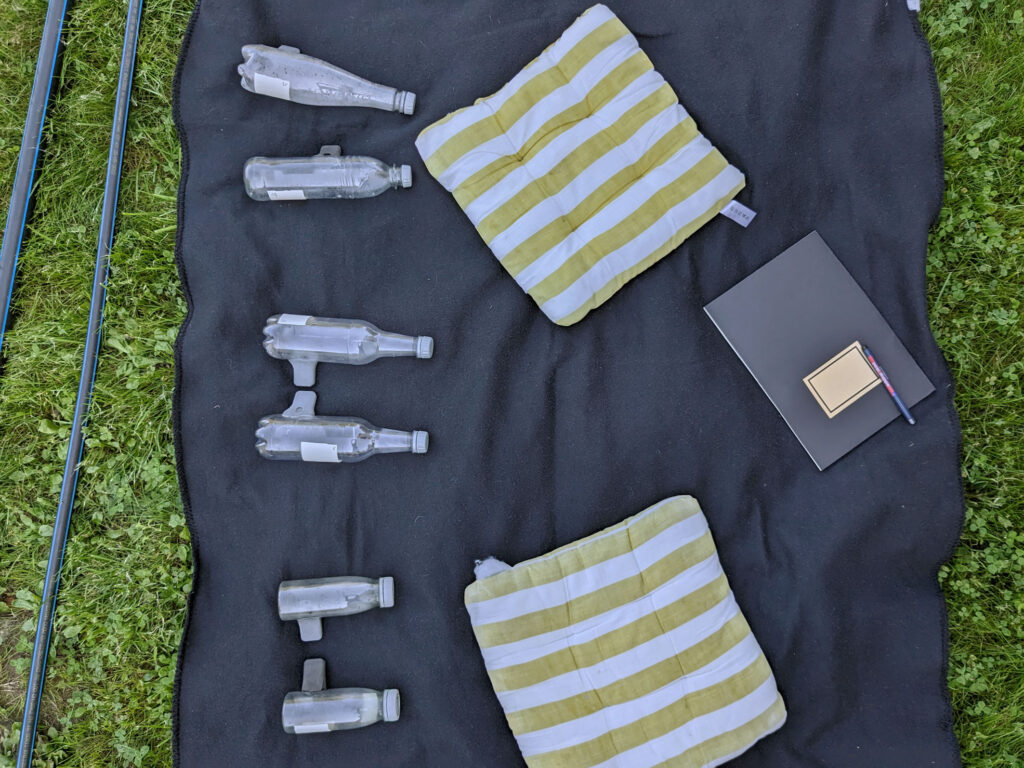
We took a fragmentary wind instrument – a mouthpiece for PET bottles printed in Berlin, and PET bottles from the flight to the southern hemisphere – the ubiquitous resonance chambers of our times.
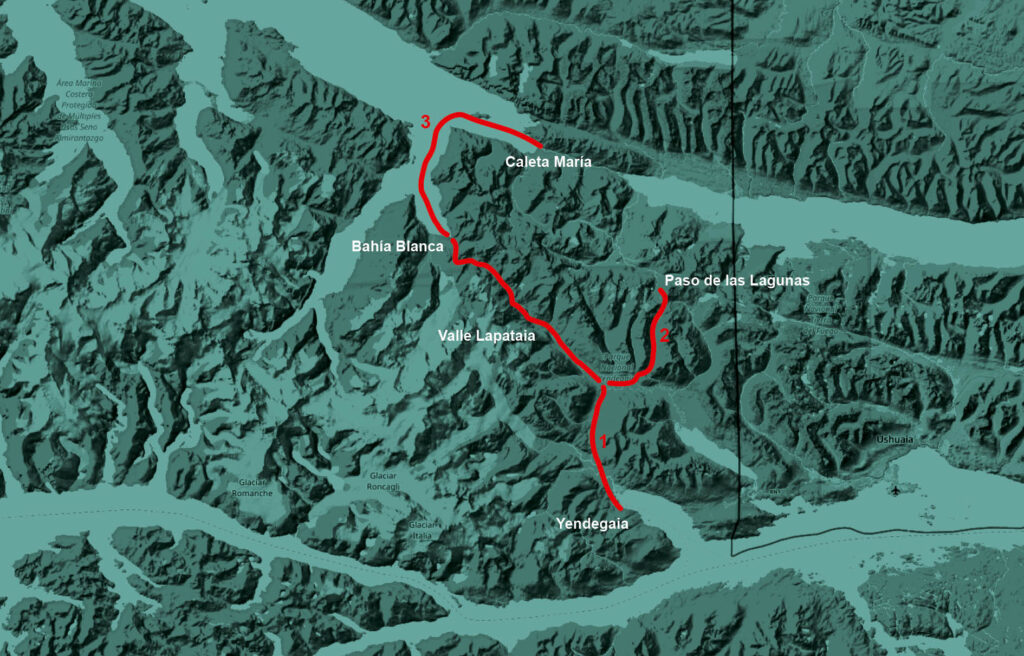
As planned, we would start separated in two groups from different entry points into the valley. The aim was to meet at the Lapataia River and continue together to Bahia Blanca.
The two of us started in different groups, how would our first different encounters with the places be, when and how would we actually manage to meet?
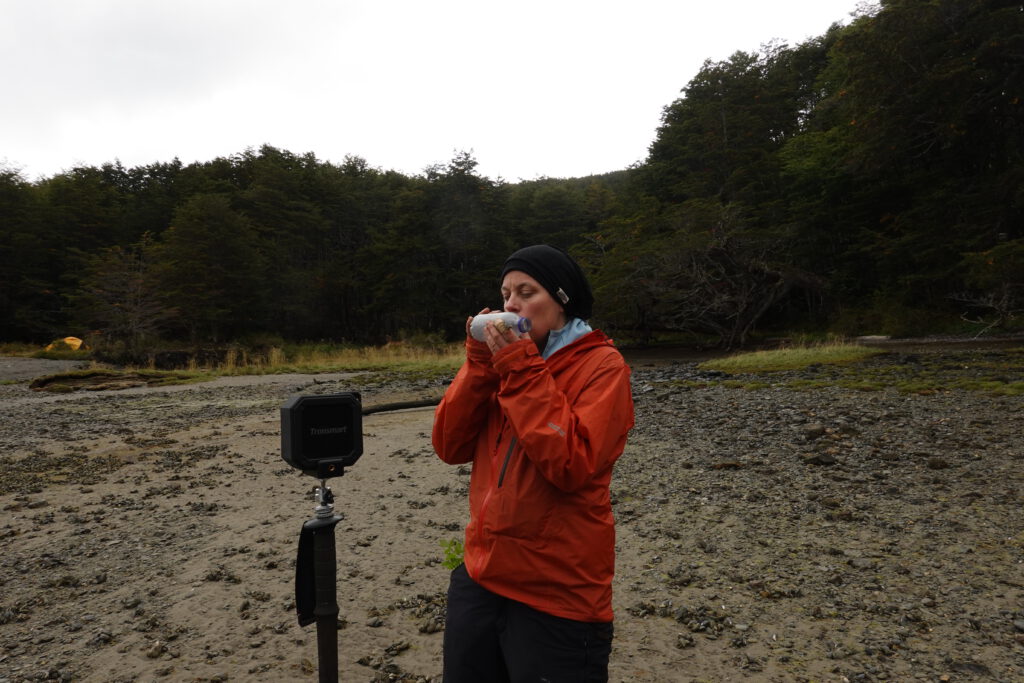
The valley is part of the so-called “intercultural contact zone” (Selk’nam, Kawesqar and Yagán) located in Yendegaia National Park (YNP).
What is a contact zone? A zone where prior separated entities have a possibility to meet.
The valley is a walkable cut in the ice covered mountain ranges.
A passage between different communities in the past.
A meeting, a hike along the old suggested passage to activate its cultural presence.
A collective practice of an interdisciplinary and intercultural contemporary group upwards the Lapataia river.
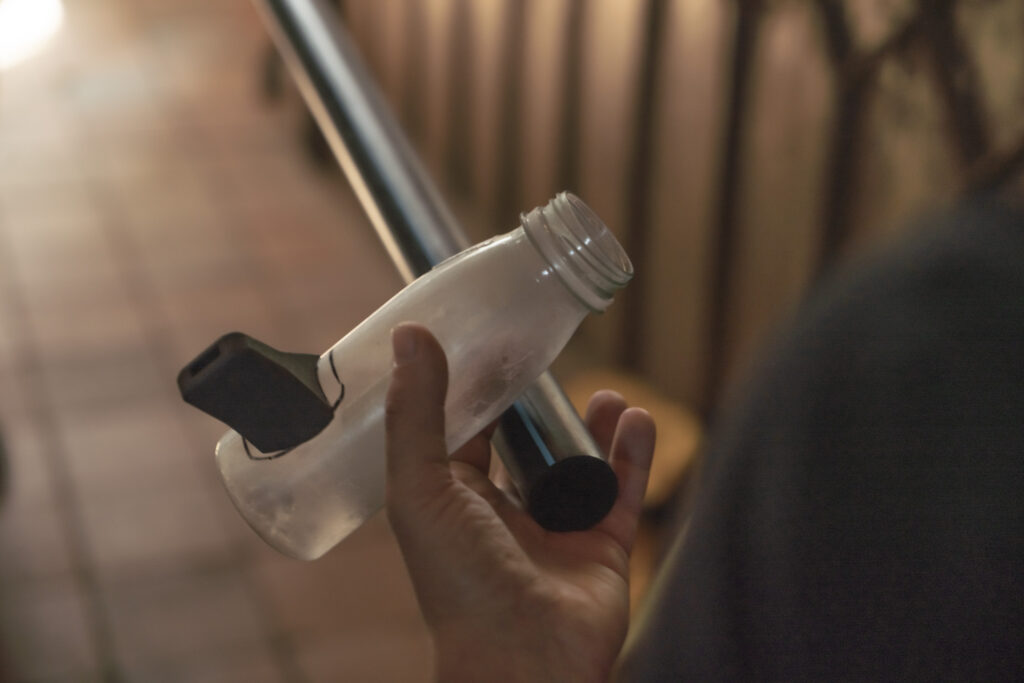
Towards Rügen, more mouthpieces and instruments were built and bottle pairs selected.
In Rügen we continued and deepened the research and exercises to finally include others and practice together.
What would one essence or principle of contact be?
Batimientos – Schwebungen – Sounding tones without semantics.
When two close-by frequencies physically meet, they start to beat and a prior non existing
third entity emerges.
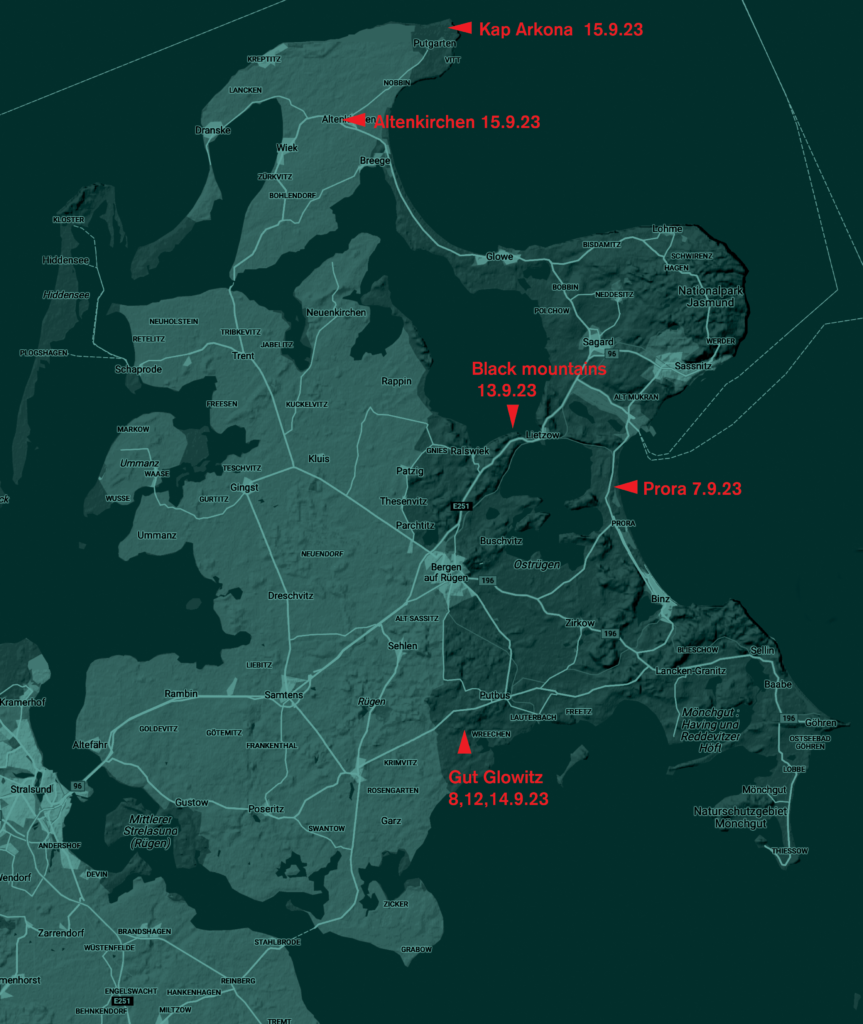
Breath and Beat
Always play in a duo
Breath in a continuum with your partner, taking turns
Find the beating
Sustain the beating as long as possible
Stop when the continuum is broken
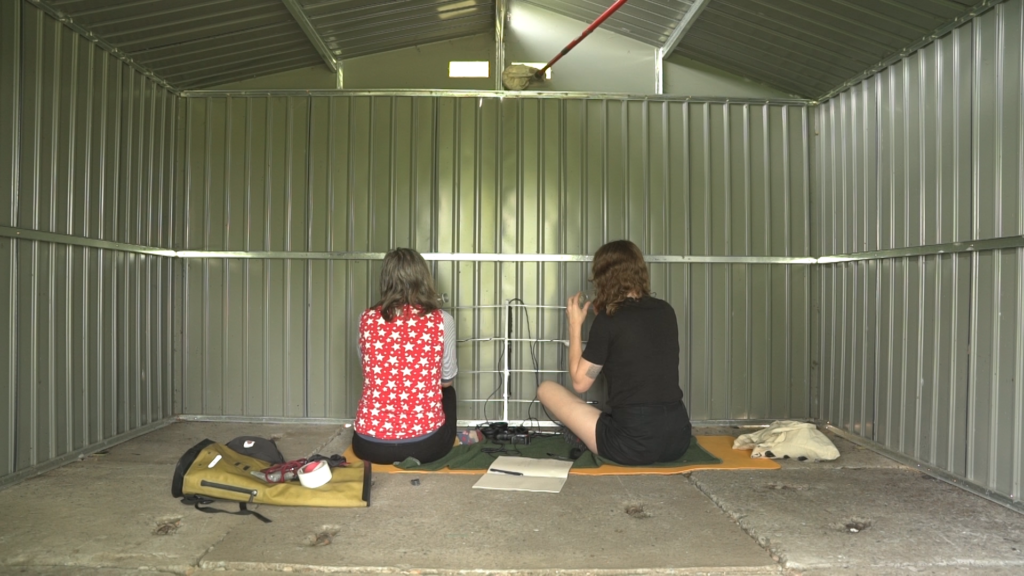
Signals (for overblowing)
Play an overblow. Wait after each signal as long as its resonance fills the landscape. When you can’t hear the signal anymore, play a new one.
Variation: play as a duo when you don’t see each other.
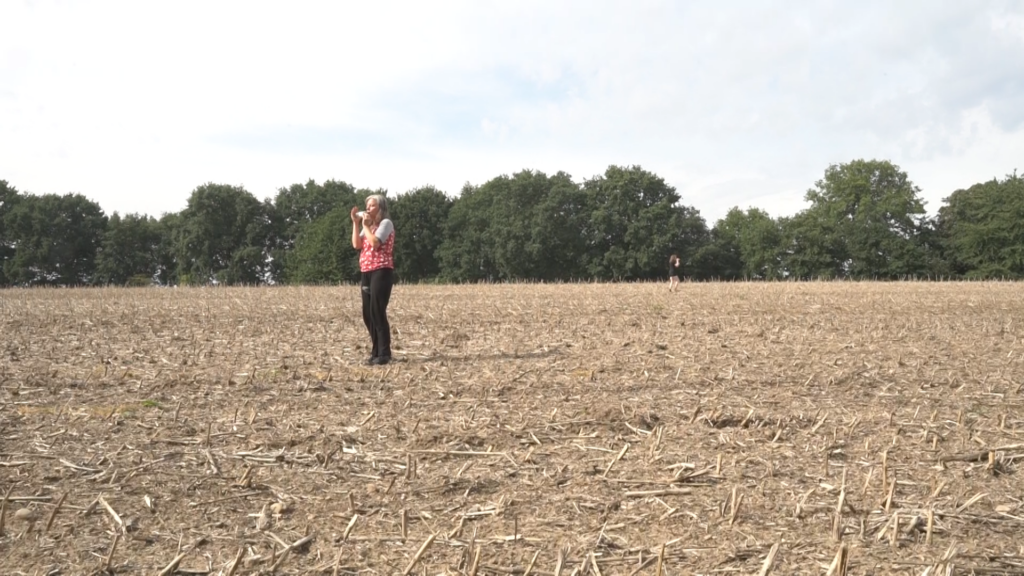
Connected air flow
Play in duos. Connect both instruments with a pipe. Breath in turns. Listen to the variations that emerge from the circulating air flow. Observe how the labium and window of your mouthpiece turn into the tone hole of your partner’s instrument.
